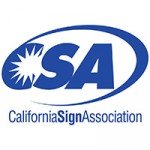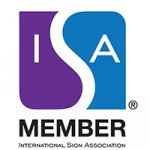Electronic Signs
Electronic signs are also known as EMCs, or Electronic Message Centers, and are a newer and constantly evolving form of signage. Descended from the incandescent bulb matrices of the 50s, 60s and 70s, modern EMCs use grids of long life LEDs, or large format LCD screens to achieve clarity and eye catching brilliance that makes their content stand out. Electronic Message Centers offer an exciting twist on traditional Graphic based signage. The most common type seen today is the monochrome LED display, but these are rapidly being eclipsed by full color displays, which are capable of not only displaying text, but video images as well. Due to the nature of the light source, the power consumption of these displays is surprisingly low for the exposure they provide. Given the power of electronic advertising, however, EMCs are destined to have a bright future and an increasing number of businesses are seeing the need for them.
Some of the advantages are:
- Flexible and Targeted Advertising
- Targets Impulse Buyers
- Increases Street Presence
- Enhances Branding
- Consolidates Advertising
- Improves Visibility
- Broadcast Public Service messages
Don’t let your message stand still while your customers pass you by. At CNP, we can tailor each EMC to match the specific needs of your project. Contact us today and find an EMC that is right for you.
Building Lighting Signs
Another popular way to identify a business, in addition to signage, is to use building accent lighting. CNP can provide a variety of technologies and products to make your building stand out from the crowd. LED light strips around the top of a building are a cost-effective way to create a unique effect and draw in customers.
Menu System Signs
Menu systems are critical to quick service restaurants and business that need to present a variety of products to customers at their store. They typically include items, prices, and some advertising graphics to help customers decide what to order. Many menu systems use changeable inserts, allowing the business to periodically update their menus. Most menus are internally illuminated, but can be externally illuminated with flood lights. Menu systems can be mounted on a wall, hung from the ceiling, or mounted on a pole. Advancements in technology have made it practical for menu signs to include order confirmation systems and LCD displays to further communicate with the customer.
Awnings & Canpoies
Building awnings and canopies are typically mounted over windows, doorways, and walkways to provide shade. In warm climates, awnings can save significantly on air-conditioning costs for a building. They are also used as decorative elements and can be very effective in sprucing up an older building. Where allowed by code, awnings can also be an effective advertising medium, since it is relatively inexpensive to print simple graphics and text on the fabric material.
Awnings and canopies are typically constructed using a metal frame, over which a fabric or vinyl covering is applied, but can also be constructed using other materials, such as steel or aluminum, with an unlimited variety of designs. CNP provides awnings and canopies for several national accounts.
Directional Wayfinding Signs
Once a customer has reached the place of business, smaller on-premise signs are often used to instruct them which way to go. Placing directional signs at the street can help motorists identify the business and indicate which driveway to use for the entrance. Directional signs can direct traffic to parking areas, drive-thru lanes, registration areas, etc. These signs are very important, especially where there is a possibility of confusion, in keeping traffic flowing smoothly from the street to the final destination.
The format of these signs can vary widely, from simple post and panel systems, to elaborate way-finding signs. Frequently, they will be constructed to match the clients building color and logo scheme. Directional signs are smaller than monument signs, ranging in height from 2 feet to 6 feet, making them easily visible at short distances. These signs are used for conveying directional information, rather than representing a recognized logo.


